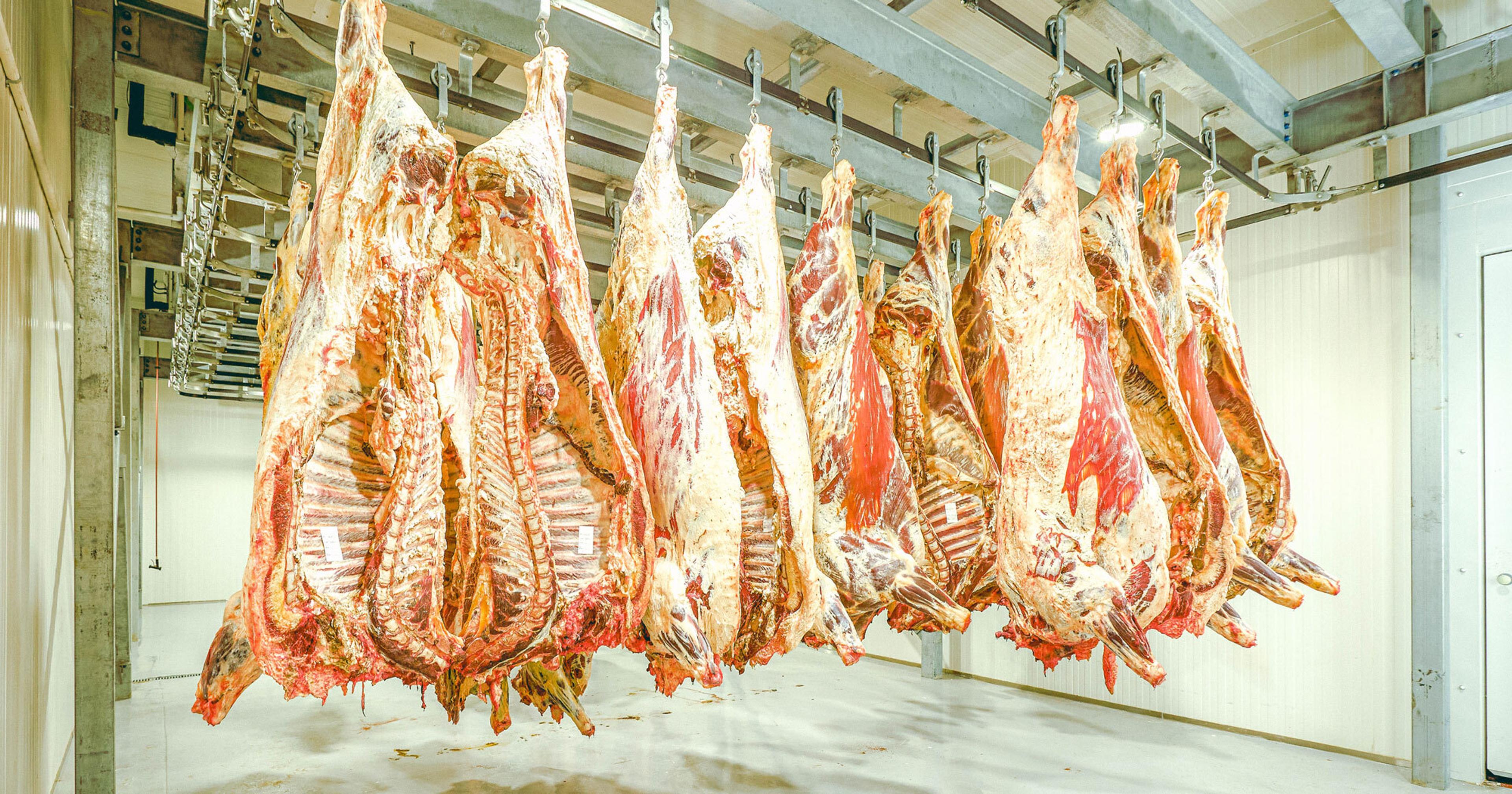Farms are at the center of a niche but growing movement, transforming the food served in carceral institutions.
Last summer, Marshal P., a prisoner and cook at the Marble Valley Regional Correctional Facility (MVRCF) in Rutland, Vermont, prepared tomato sauce from scratch, using 300 pounds of tomatoes grown at a farm nearby. “It’s actually cool to make it all fresh,” he said.
Marshal, who patronized farmstands prior to being incarcerated, was pleased by the positive response from fellow prisoners to his homemade meals. “Guys will come by and say, ‘Hey, dinner was great!’” he reported.
Using nutritious, local ingredients in a prison setting to cook food from scratch is far from the norm. Yet MVRCF is one of a handful of correctional facilities throughout the country serving fresh food crafted from area products, reshaping the unhealthy, tasteless, even toxic diet that has historically been served to people in prison.
“Food is so much more than what is on the tray,” said Leslie Soble of Impact Justice, a nonprofit prison reform organization which released a groundbreaking report in 2020 on the food served in United States prisons. It starkly details aspects like maggots found in meat and quotes those formerly incarcerated: “The food there was designed to slowly break your body and mind.”
Against the backdrop of George Floyd’s murder and the hot topics of public health and food security and access, the findings brought a newfound awareness to this issue, offering fresh approaches and fueling conversations and nascent change.
“Obviously there is the nutritional aspect, physical health, mental health, but also how do people absorb a sense of identity, what’s being communicated through food?,” said Soble, the report’s lead author. “Is there a way that food could support re-entry?”
Better food and nutrition hopefully translates into an improved rehabilitative experience, along with lower health care costs for the state and taxpayers, said Isaac Dayno, public policy director for Vermont’s Department of Corrections (DOC). Correctional facilities “have a moral obligation,” he added, “to support our {agricultural} communities and to make sure we’re getting folks healthy, fresh food.”
Over the past decade, amid the recognition that access to healthy food is a human right, there have been efforts to overhaul institutional food at hospitals and schools — but not at prisons and jails. “Correctional facilities,” said Dayno, “have always been a place where we put people we don’t want to think about, where we kind of disappear folks who society has deemed are too much trouble to be dealt with in the public sphere.”
“When you get the fresher stuff, you notice the difference daily on how your body is feeling.”
Kyle Moore, MVRCF’s food service supervisor, was purchasing local corn and apples before Vermont’s DOC instituted a strategic plan prioritizing health and wellness in 2024. Moore said now they’re considering how the food served affects “the way people perceive themselves, where they’re better nourished and feeling like they can then go and do things that they can better accomplish their goals.”
Discovering that Vermont’s procurement contracts allowed some discretionary purchasing, Moore visited over 50 farms across the state, developing relationships with producers. His experience highlights a prominent hurdle: Each state possesses different, often cumbersome, and poorly understood procurement policies.
California’s application is 32 pages long, said Hope Sippola, farmer and co-owner of Spork Food Hub in Davis, California, which supplies food from area farmers to institutions like schools, prisons, and prison hospitals. Spork is part of “Harvest of the Month” (HOTM), a pilot program of Impact Justice and the California DOC which delivers a California-grown product like persimmons and asparagus to the state’s adult facilities monthly.
“It always aligned with our mission to improve the food in the places that need it most,” said Sippola. HOTM is part of Impact Justice’s farm to corrections program, which also holds trauma-informed nutrition education classes for those formerly imprisoned. Fresh produce exposes those inside to new foods, tastes, ideas, and understanding about food, said Heile Gantan-Keo, who oversees the program. It launched in three sites in July 2023; by year’s end, all 31 will be participating. Impact Justice’s other projects include advocacy work and recommending best kitchen practices.
Because Spork aggregates products from mid-size and smaller farms to assemble enough to meet an institution’s needs, producers are able to access markets they might not be able to otherwise. The food hub model is also key to managing the procurement process, as most farmers do not have the time nor bandwidth for the intensive application.
Sippola notes the program’s value to farmers, who need high-volume, consistent year-round sales — particularly over the summer, when produce is most abundant.
Sippola notes HOTM’s value to farmers, who need high-volume, consistent year-round sales — particularly over the summer, when produce is most abundant. Legislation requiring that, by 2026, 60% of agricultural food products purchased by California government agencies be produced in-state, offers real opportunity for market expansion. But winning a contract is lengthy, unwieldy, and unguaranteed; agencies are required to review at least three bids for any item.
Moreover, correctional facilities’ food budgets often only allot under three dollars per person per day according to Impact Justice. California-grown produce costs nearly 20-30 cents more per serving than distributor offerings from Mexico.
Surprisingly though, purchasing nearby can often be less expensive, said Mark McBrine. A farm owner and director of farm to table programs at Maine’s DOC, McBrine pioneered creative, local purchasing while establishing the same self-described “scratch cooking, whole foods approach” that he used at home. He believes that eating convenient, processed foods has wrought a health crisis in America.
Under McBrine’s ovesight, Mountain View Correctional Facility (MVCF) uses Maine Grain Alliance’s literal “run of the mill” flour. This product results from the two or three initial runs of the stone mill to fine tune the consistency of a particular grind, at a considerable discount. Baking a sub roll in-house costs 5.8 cents, versus 33 cents for one purchased via a state contract. Instead of paying for convenience, said McBrine, “We’re able to do this very efficiently and save a tremendous amount of money. And it’s a lot better product.”
Moore sometimes purchases seconds or an oversupply at lesser cost. His staff is testing products from Salvation Farms, an enterprise using agricultural surplus to build a resilient food system in Vermont. Salvation is developing a line of minimally processed frozen foods like cubed winter squash crafted from seconds and gleaned produce that can be easily incorporated into institutional meal plans.
Moore has also teamed with Farm to Institution New England (FINE), which works to support a healthy, equitable, local food supply chain. The organization brings together a diverse network of partners ranging from producers and processors to colleges and carceral institutions. It is currently surveying his area expenditures, about $35,000, to offer suggestions for establishing local procurement at Vermont’s other correctional facilities.
“The world of people doing this work is still very small and tight knit, but it has expanded exponentially in the last five years.”
FINE also conducts research, hosts a biennial summit, and facilitates Zoom calls and communities of practice for the region’s prisons for networking and idea sharing.
Some takeaways are as simple as working with a facility dietician to develop purchasing flexibility by adjusting a menu item description from, say, broccoli salad to seasonal salad. Other, bigger shifts, like seasonal menu planning, procurement changes, and increased budgets, will take time, effort, and likely, political will.
Along with the changes to the food served in prisons, facilities in other states like Michigan and Oregon have developed high-quality kitchen and gardening apprenticeships in which participants receive certifications and can sometimes be paid. Others, however, have come under fire for abusive prison labor programs. MCVF’s program supplies the prison, has a regenerative focus, and is even the subject of a documentary, Seeds of Change.
Reforming the food served in prisons is an uphill battle — there are at least 6245 correctional facilities in the United States — and the topic is getting another spotlight with reports of moldy, expired food being served at ICE detention centers. Soble is encouraged not just by the outlier efforts taking root, but also the willingness of policy makers and those working in corrections to being more open to considering avenues for change. “The world of people doing this work is still very small and tight knit, but it has expanded exponentially in the last five years,” she said. “Even if we’re not seeing a ton of concrete, on-the-ground change, I do feel there in the past five years has certainly been a shift in the way we talk about this issue and a shift in who is participating in those conversations.”
“Before,” said Marshal P., “you were always feeling like you were missing something, even taking vitamins.” He mentions MVRCF’s shift from powdered to fresh milk. “When you get the fresher stuff, you notice the difference daily on how your body is feeling.” He appreciates the benefits to him, others who are incarcerated, and to farms, too. Said Marshal, “It feels good all around.”










